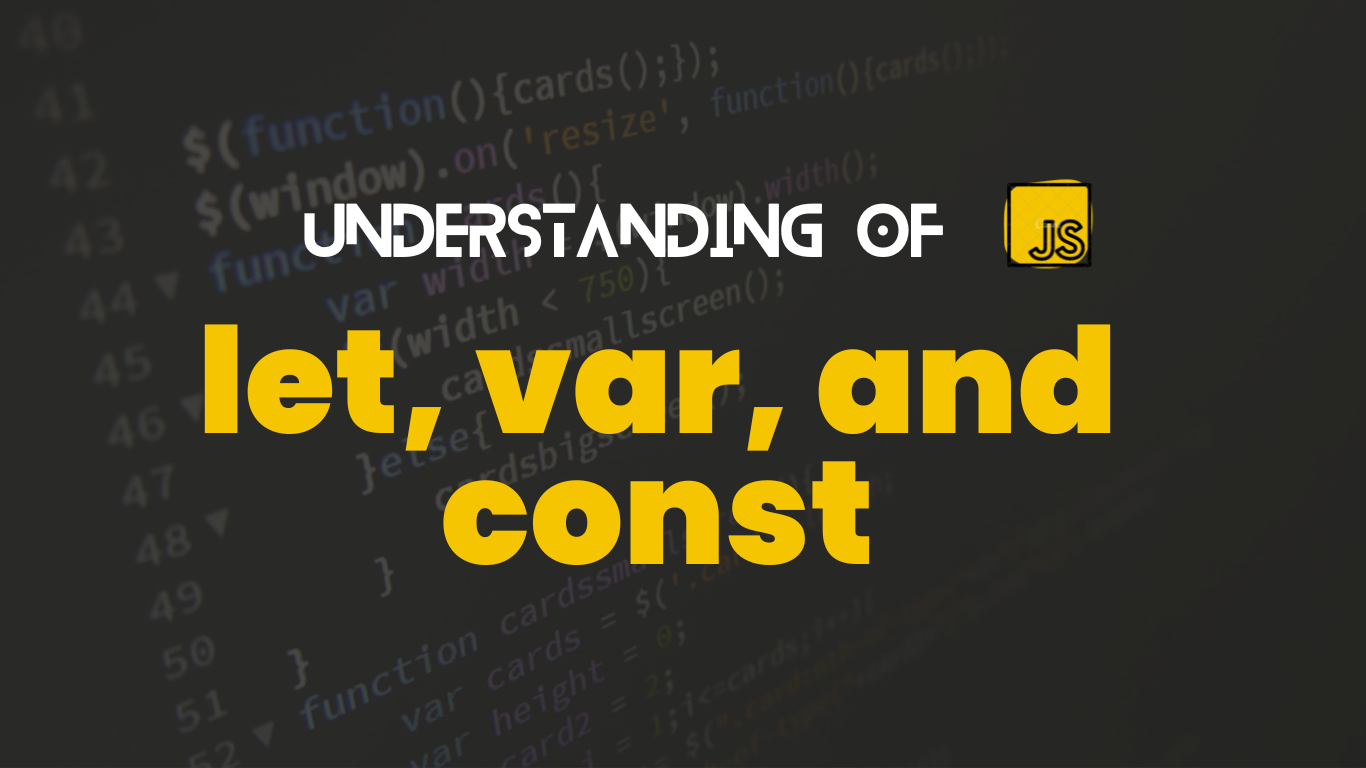Hello, JavaScript Enthusiasts!
Today, we’re unraveling the fundamentals of variable declarations in JavaScript: var, let, and const. Mastering these concepts will enhance your ability to write clean, efficient, and bug-free code. Let’s dive in! 📚
1. Var
- Scope:
varis either function-scoped or globally scoped. This means it’s accessible within the function or script where it’s defined. - Hoisting:
varvariables are hoisted to the top of their scope, making them accessible before their declaration, but they are undefined until their declaration line is executed. - Re-declaration: You can re-declare a variable using
varwithin the same scope without any errors.
Example 1:
console.log(x); // undefined
var x = 5;
console.log(x); // 5Example 2:
if (true) {
var y = 10;
}
console.log(y); // 10 (accessible outside the blockExample 3:
function testVar() {
var z = 20;
console.log(z); // 20
}
// console.log(z); // ReferenceError: z is not definedExample 4:
var x = 1;
var x = 2; // No error
console.log(x); // 2Use Case: Avoid using var in modern JavaScript. Its function-scoping can lead to unexpected behavior. ⚠️
2. Let:
- Scope:
letis block-scoped, meaning it is accessible only within the enclosing{}. - Hoisting:
letvariables are hoisted but remain in the Temporal Dead Zone (TDZ) until their declaration line is executed. - Re-declaration: You cannot re-declare a variable using
letwithin the same scope.
Example 1:
if (true) {
let a = 20;
console.log(a); // 20
}
// console.log(a); // ReferenceError: a is not definedExample 2:
let b = 10;
b = 15; // Allowed
console.log(b); // 15Example 3:
for (let i = 0; i < 3; i++) {
console.log(i); // 0, 1, 2
}
// console.log(i); // ReferenceError: i is not definedExample 4:
let c = 30;
// let c = 40; // SyntaxError: Identifier 'c' has already been declaredUse Case: Use let for variables that can change but should remain limited to block scope, such as in loops or conditionals. 🔄
3. Const:
- Scope:
constis also block-scoped, just likelet. - Hoisting:
constvariables are hoisted but remain in the Temporal Dead Zone (TDZ) until their declaration line is executed. - Re-declaration: You cannot re-declare or reassign a
constvariable. - Immutability:
constvariables cannot be reassigned, but if they hold an object or array, their contents can be modified.
Example 1:
const d = 50;
console.log(d); // 50
// d = 60; // TypeError: Assignment to constant variable.Example 2:
const obj = { name: "Alice" };
obj.name = "Bob"; // Allowed
console.log(obj.name); // "Bob"Example 3:
const arr = [1, 2, 3];
arr.push(4); // Allowed
console.log(arr); // [1, 2, 3, 4]Example 4:
if (true) {
const e = 100;
console.log(e); // 100
}
// console.log(e); // ReferenceError: e is noUse Case: Use const for variables that shouldn’t be reassigned, like configuration values or constants. 🔒
Conclusion
Choosing the right variable declaration is essential for writing clean, predictable code. Use let and const to avoid the pitfalls of var. Here’s a quick summary:
| Keyword | Scope | Re-declaration | Reassignment | Hoisting |
|---|---|---|---|---|
var | Function/Global | Allowed | Allowed | Yes, initialized as undefined |
let | Block | Not Allowed | Allowed | Yes, but in TDZ |
const | Block | Not Allowed | Not Allowed | Yes, but in TDZ |
Let’s keep growing our JavaScript knowledge. Happy coding! 💻✨
- Mastering Hoisting in JavaScript: A Comprehensive Guide
- Understanding let, var, and const in JavaScript
Coding Tips Frontend Development Hoisting JavaScript JavaScript Basics JavaScript Best Practices JavaScript Concepts JavaScript Examples JavaScript Functions javascript interview question javascript let var and const JavaScript Tutorials JavaScript Use Cases javscript let var and const most asked javascript question Programming understanding of let var and const Variable Scope Web Development

